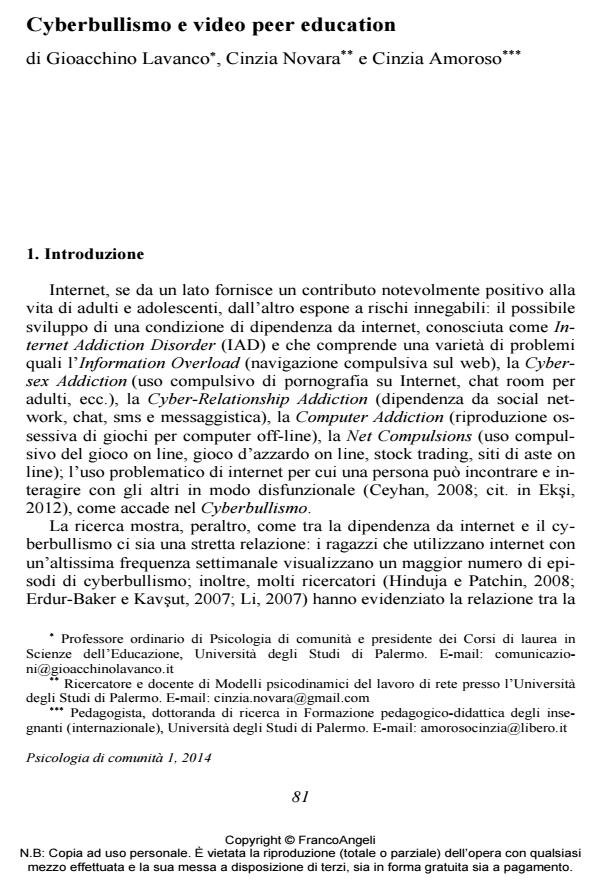Cyberbullying and peer education video
Journal title PSICOLOGIA DI COMUNITA’
Author/s Gioacchino Lavanco, Cinzia Novara, Cinzia Amoroso
Publishing Year 2014 Issue 2014/1
Language Italian Pages 10 P. 81-90 File size 59 KB
DOI 10.3280/PSC2014-001007
DOI is like a bar code for intellectual property: to have more infomation
click here
Below, you can see the article first page
If you want to buy this article in PDF format, you can do it, following the instructions to buy download credits

FrancoAngeli is member of Publishers International Linking Association, Inc (PILA), a not-for-profit association which run the CrossRef service enabling links to and from online scholarly content.
The aim of this article - through a process of action-research involving a sample of 243 subjects pre-teens and adolescents - is to highlight how the information medium can cause attacks, harassment, insults; but at the same time, it in use as a source of new communication strategies of group interaction and educational intervention in virtual communities. Cyberbullying is materialized in the lives of victims in each moment of the day and through different realities (video, photos, email, chat, sms, phone calls, ecc.). One of the methods of prevention, which looks at the group dynamics and the media technologies as a source of education, is the peer education video. The use of online materials as a method of prevention and awareness of educational agencies and proponents of the same and / or victims of cyberbullying.
Keywords: Cyber-bullying, traditional bullying, prevention, peer education video, new groups, modern educational dimensions.
Gioacchino Lavanco, Cinzia Novara, Cinzia Amoroso, Cyberbullismo e video peer education in "PSICOLOGIA DI COMUNITA’" 1/2014, pp 81-90, DOI: 10.3280/PSC2014-001007